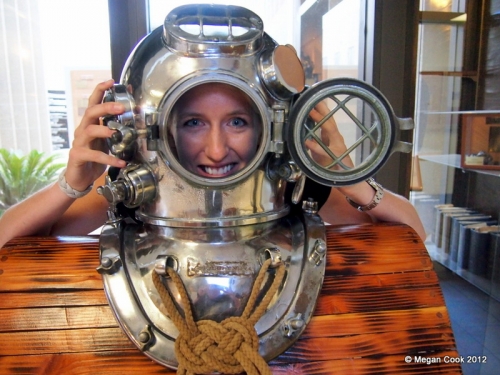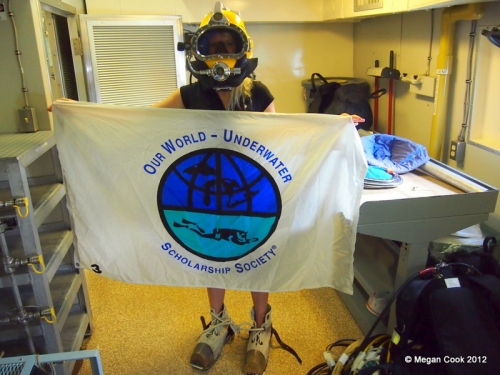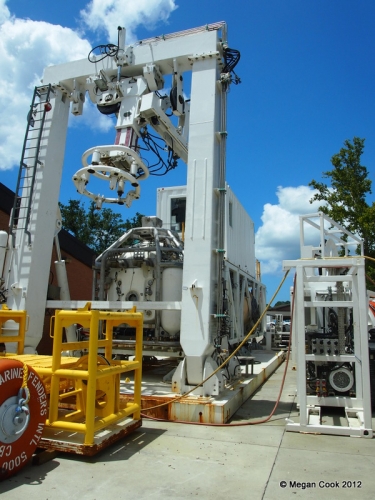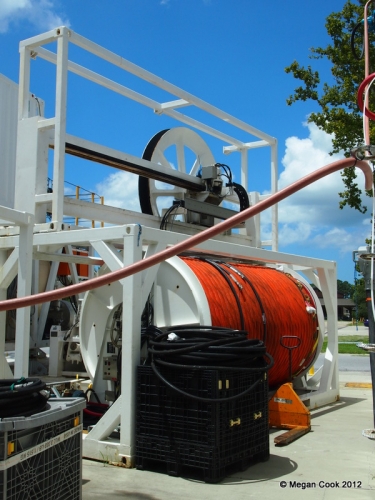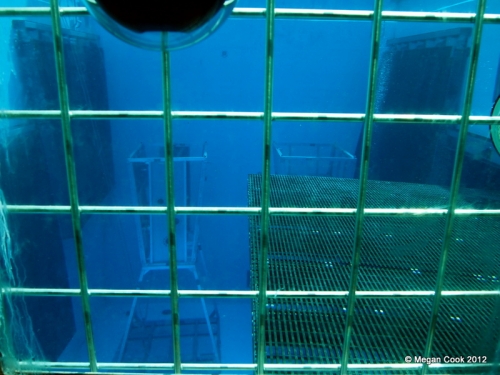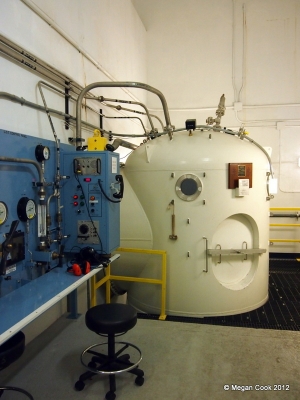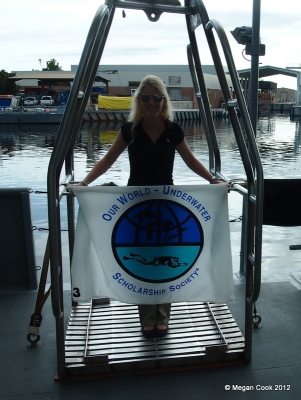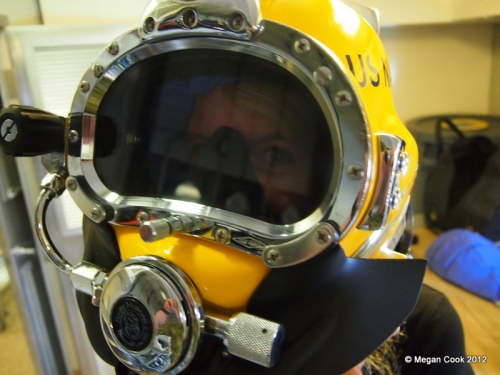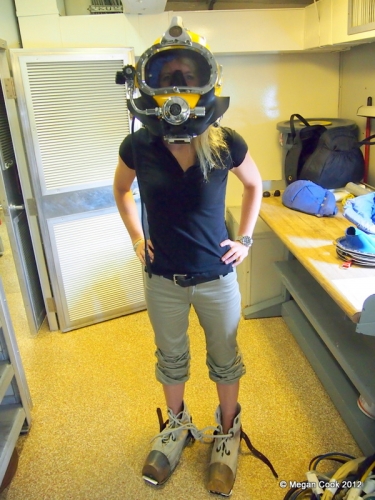My mission to explore the whole diving industry wouldn’t be complete unless I started at the beginning of the story. The Navy pioneered most of the equipment, safety procedures and science of diving long before the recreational community blossomed. I had the chance to return to the heart of it all with a visit to the Naval Diving and Salvage Training Center (NDSTC) and Navy Experimental Diving Unit (NEDU) in Panama City Beach, Florida. NEDU is home to the research and development of new technology as well as testing the biomedical effects of diving.
Dr. Paul Algra, LT MC USN (UMO/DMO) and Public Affairs Officer, met me for an inside look behind the Navy’s diving doors. I couldn’t help but feel I was being let in on fantastic secrets walking the halls between development labs and testing facilities. Pictures aren’t allowed inside of the buildings- so hang with me guys!
Before a new piece of equipment is ever strapped on a human diver, every element goes through rigorous pre-testing including being pressed down in a chamber to its max functional depth. Everywhere you turn is a hyperbaric chamber on this base! One pre-testing lab had a collection of mannequins with piston-driven ‘lungs’ to demo equipment and test how it holds up to gas blends or stress. Looking a little worse for wear, you know these dummies have caught more than one malfunction, saving countless divers, in their years of service.
As a big fitness fan, I was fascinated checking out the physiological research lab! A hybrid of the gym and a scientist’s playground, doctors and researchers can measure respiration, blood pressure, heart rate, differential gas metabolism, VO2 Max, cognitive skills, coordination and more while divers bicycle, jog, row, stair-climb or rest while breathing any gas mix you can imagine. There’s even a tilt table in case you want to know how any of those previous variables change when you’re standing on your head.
Since the Navy sends divers all over the world, effects of temperature are a major research theme. Special tubs in the lab can be super-cooled for testing drysuits. One study charted the reactions of divers submerged perfectly still when the heating systems in their suit extremities malfunctioned. All participants volunteer for research protocols, but I’m sure this project wasn’t one with a waiting list out the door. The same lab has a giant steel freezer door which opened to a room of workout equipment. This climate controlled room can be dialed from near freezing up to above 100 degrees with humidity control up to 98% and even wind gusts. Military members can hop on a treadmill in full combat gear and researchers can track physiologically what will be happening to their bodies an environment like Iraq or Afghanistan. A two-story test pool allows the same kind of evaluation for underwater work.
Saturating Worldwide
Most Navy diving these days is surface supplied (hardhats), rebreathers, or saturation diving. World-class, one of a kind saturation research happens at NEDU’s Ocean Simulation Facility (OSF). The OSF can press down divers and equipment all the way down to maximum pressure equivalent of 2,250 feet (690 m) seawater! The chamber consists of a 55,000-gallon wet chamber and five interconnected dry living/working chambers above. This three story tall chamber complex is big enough to drive a school bus inside and was sitting open during my tour. Protocols can go on for 30 days of continuous exposure in the OSF. Divers live in dry chambers then shimmy down a ladder for diving excursions into the wet chamber. Fun fact: In the early years of the OSF, the Navy issued all saturation divers a Rolex Submariner timepiece because this was the only technology capable of handling the pressure exposure!
As a general rule, for every 100 feet you saturate it will require a full day of decompression!
Only last month this SATFAD passed its manned testing and certification making it the newest and coolest technology in the saturation community. A SATFAD is a Saturation Fly Away Diving System, a self-contained, fully-mobile saturation platform built to travel anywhere in the world. It can be craned onto a ship or broken down an deployed in military cargo flights. The multi-chambered SATFAD supports the full range of Navy operations ranging from crisis response to salvage around the world’s littorals and continental shelves. Divers are locked inside and pressurized at the working level. One team climbs into the pressurized diving bell and is lowered into the water to work. After 10-12 hours they return to the diving bell, pressurize it again, return to surface still under pressure, re-dock with the main chamber and teams trade. Six divers can saturate down to 1000 feet, working around the clock with up to month-long missions. The volume of work capable using saturation diving is staggering.
Welcome to Dive School
While in Panama City Beach I also had the chance to visit the Naval Diving and Salvage Training Center with Timothy P. Bruce, M.D. LT MC(UMO/DMO) USN. As the Senior Medical Officer Lt. Bruce cares for all students at dive school as well as staff within the training command. That’s a lot of inner ears and pruney fingers to look out for and I was flattered he took a day to tour me through the command. It was especially exciting to visit this week because several classes are on base training. NDSTC trains all military divers with the exception of Navy Special Warfare (SEALS) and Special Forces. This includes Navy, Army, Air Force, Coast Guard and all Marine Corps Combatant divers- men and women. The training pools all have underwater viewing ports (think of an aquarium but instead of sea creatures incredibly fit young men and women swim by). I had a front-row seat to see the Marine Combat Diver class and an EOD (Explosive Ordinance Disposal) Diver class. Did you know: EODs dive entirely synthetic/plastic rebreathers so they give off no magnetic signature that might trigger bombs or mines?
Although they all swim like fish, dive candidates don’t necessarily have any scuba experience before beginning training. I would have never known that watching the Marine Combat class coolly handle their rig suddenly disassembled, buddy wrestled away and snowballing problem-solving tasks. During ‘confidence training’ instructors freedive down to impose different challenges on the teams below. The most common way to fail a recreational scuba class is trouble with the mask flood and clear drill. The most common way to fail Marine Combat Diving class is to have your entire air supply stolen from you in the middle of a task-loaded drill while hoses are being knotted and your fins, masks and buddy are all yanked from you. Dive school produces the world’s leading underwater specialists who are incredibly tough and talented.
Everything in the Navy gets a formal name and acronym, so Yard Duty Tender didn’t immediately mean anything to me. Let me translate: YDT means ‘tricked out, super-intense dive boat’. However, YDT-18 is a dive boat in the same way Shamu is a bait fish. She dwarfs her recreational equivalent at 132 feet long and commanding a 500 yard buffer around open-ocean ops. During our walk-through there were 35 sets of doubles staged on deck.with enough room left over for cartwheels. (For the record there were no cartwheels!) She is the day boat for NDSTC near shore training and built to support surface supply divers. Check out the platform craned over the side to deploy a hardhat diver!
There were several hardhat rigs drying on board and I was able to check a wishlist item off clamping into a Navy hard helmet. (Thanks Lt. Bruce!) This is the Kirby Morgan 37, lovingly known as the Cadillac of Dive Helmets! It’s connected by communication lines and air supply to the surface at all times. The helmet weighs about 30 pounds, but the diver can snap into it without help unlike previous models. Each of the brass boots weighs about 6 pounds!
I was in a whole new world of diving this week in Panama City. I’m truly thankful to Commanding Officer Lehnhardt of NEDU and Commanding Officer Egan of NDSTC for hosting me at their command. Most of the officers had never heard of the Rolex scholarship, but after the last couple days I know there will be a strong candidate pool when OW-USS announces its scholarship for ages 26-55. Thank you also to Lieutenants Algra and Bruce for their time, hospitality, and careful explanation of every acronym I encountered. As always, thank you to Rolex and Our World-Underwater Scholarship Society for making opportunities of this kind available. It’s a truly remarkable experience!
I would love to know your thoughts and questions as this adventure rolls on. Please comment below. Subscribe to the blog above! Like the new Megan Cook-Ocean Ambassador Facebook page. Check out travel videos on my MeganCook33 YouTube Channel. Tweet @MeganCook33. Don’t forget ol’ reliable, email me at NARolexScholar2012@owuscholarship.org Happy Bubbling!
Esmerelda
